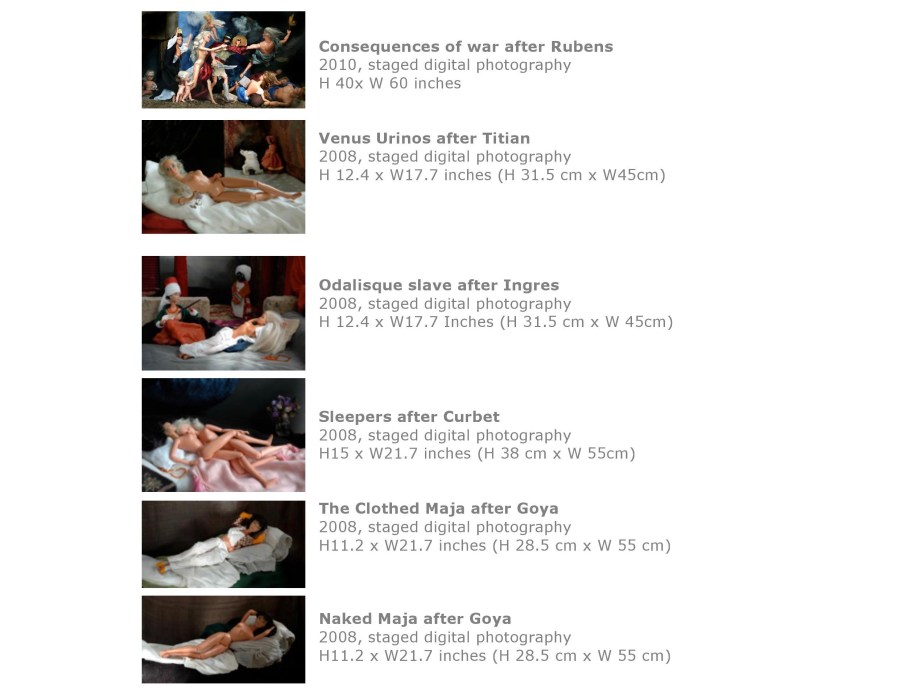cUMENI
Kristyna Milde, Turkish bath after Ingres, 2008, staged digital photography, H19.7 x W19.7 (H50 cm x W50 cm)
The series cUMENI is exploring the representation of women in historical paintings and in the contemporary pop culture by juxtaposing two seemingly different approaches of depicting women: European master paintings and the Barbie doll. The dolls in the series play the role of historical icons in the familiar paintings pointing out the connection between a representation of women in the past and the present.
The paintings are re-created as a 3D diorama, built from very simple materials such as paper and fabric, which children may use to play with, and then photographed mimicking the original atmosphere and composition of the painting. The process explores the role of mastery in creating a work of art through play and improvisation.
The motifs and narratives of the historical paintings range from the Antic Mythology to the Oriental Harem culture, considered as exotic, fantasy places, where other laws and standards are allowed. Here the nudity and secret dreams could be lived covered by the context of the otherness. As traditionally recognized media, historical paintings sanction the gaze, which in other contexts would be considered voyeurism. The Spanish painter Francisco Goya was first who depicted his model as a real woman not as a mythological figure upsetting the ecclesiastical authorities. The name cUMENI plays in the Czech language upon words art and gaping emphasizing the voyeuristic nature of the paintings.
The use of the Barbie as characters in the paintings addresses the doll’s significant cultural and educative impact on the young generation. The visual appearance and physiognomy of the dolls influence already from an early age the creation of the cultural identity and self-perception. The children are not only playing but also learning and absorbing specific sensitivity of reality represented by the products, resulting in a very narrow view of beauty, identity, and the woman’s body. Only recently in 2014, a new series of dolls have been made, which is more in accordance with real proportions, changing the trend set in the 1950’s.
The cUMENI series examines how these modes of representation impact our perception of women, emphasizing the body as an object of desire and visual pleasure and exploring the depiction of women and female sexuality within the art history and popular culture.
Works List:


















